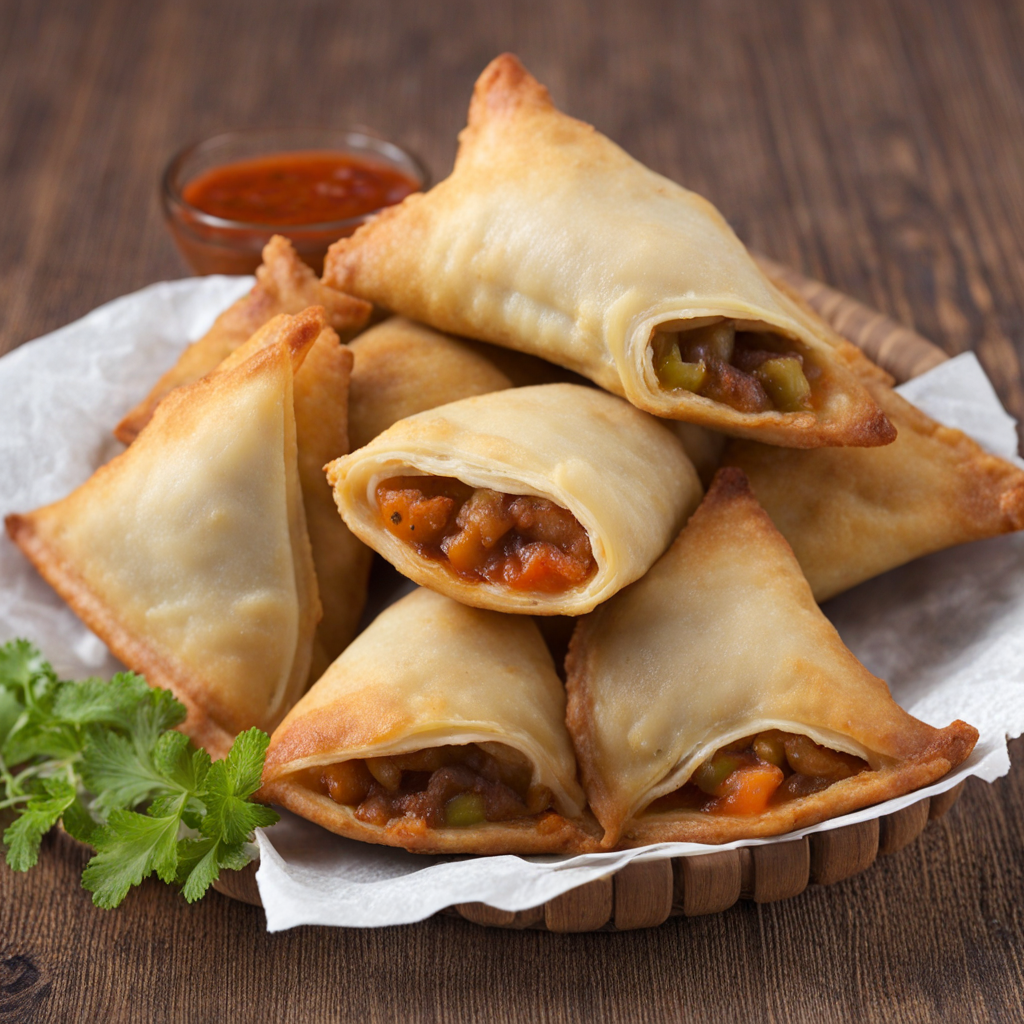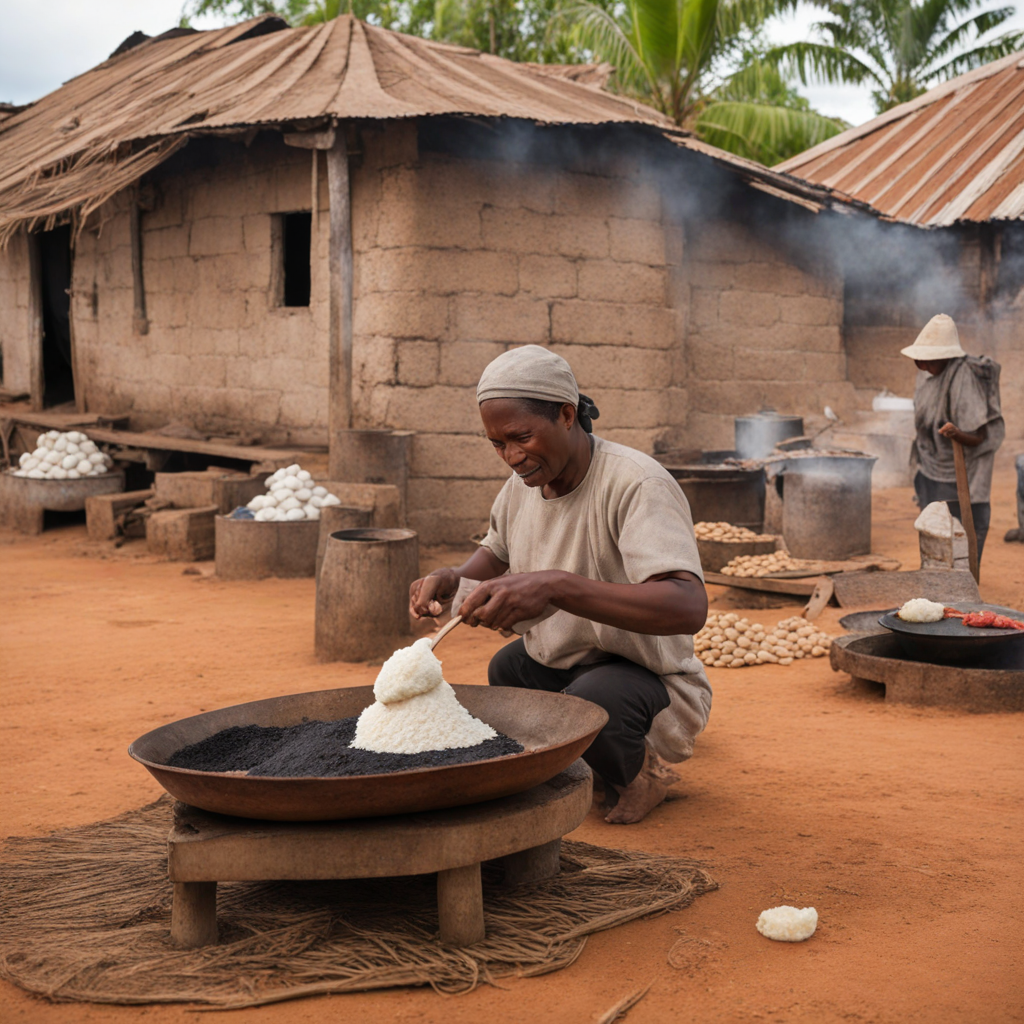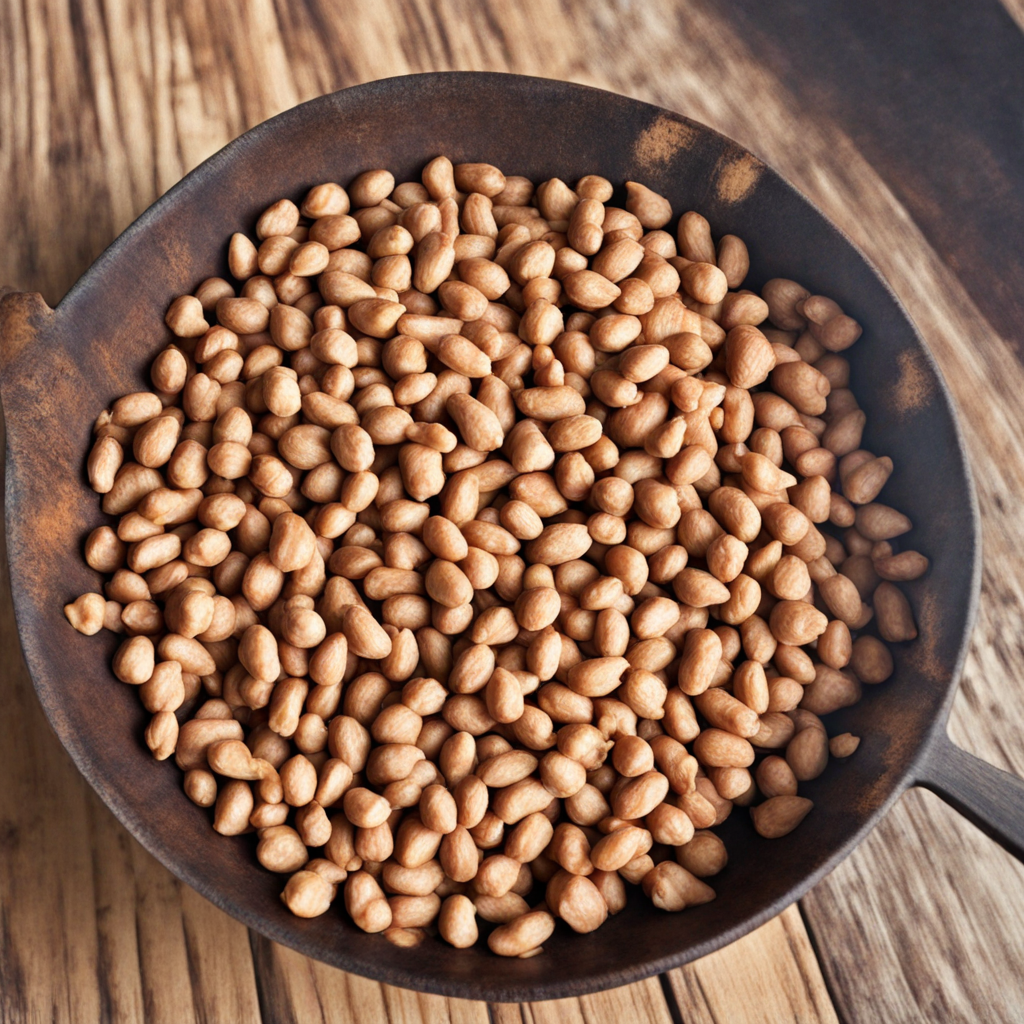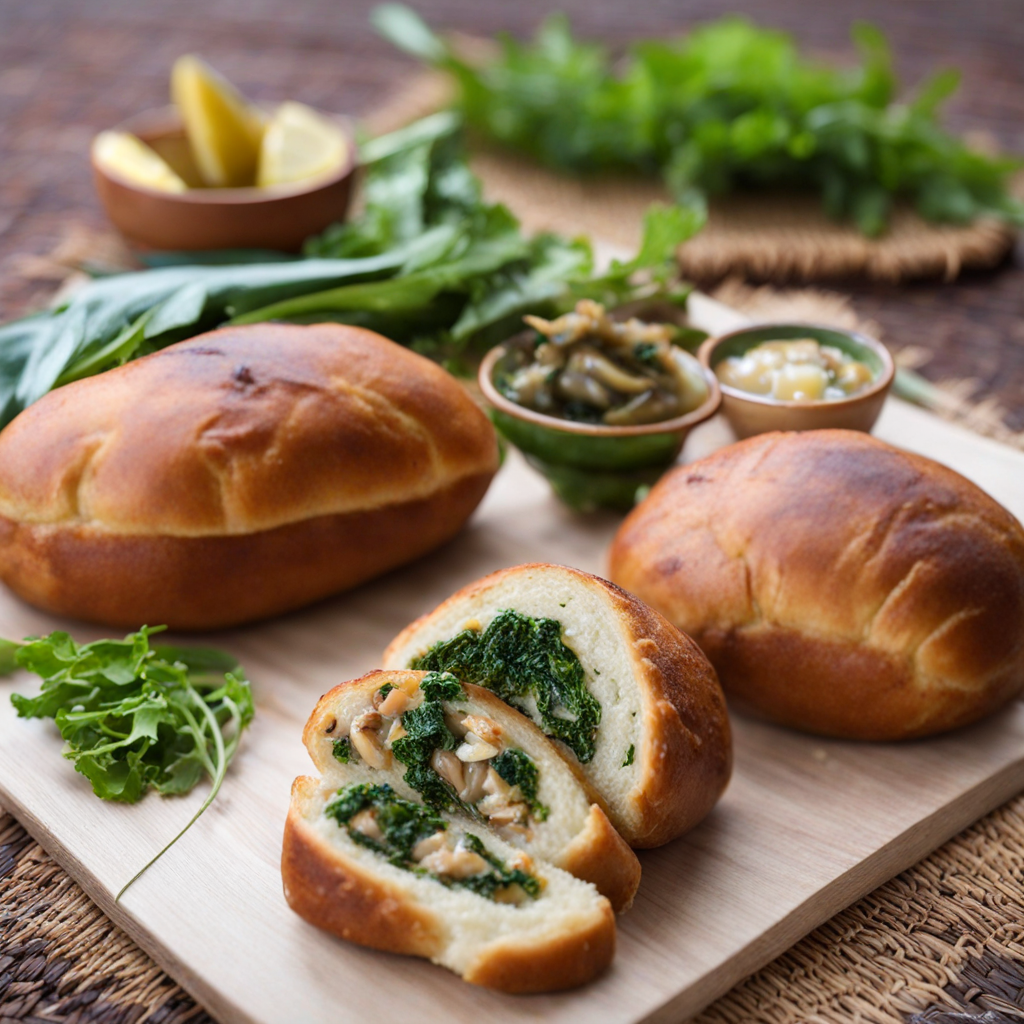Sambos
Sambos, also known as samosas or sambusas in various regions, are a beloved snack originating from Madagascar, showcasing the island's rich culinary heritage. This delectable dish has roots that trace back to the Indian subcontinent, reflecting the historical trade connections and cultural exchanges between India and Madagascar. Over time, sambos have evolved to incorporate local ingredients and flavors, thus becoming an integral part of Malagasy cuisine. They are often enjoyed as street food, served at social gatherings, or as appetizers during festive occasions. The flavor profile of sambos is a delightful combination of spices and textures. Typically, they feature a savory filling that may include a mix of potatoes, meat (commonly beef or chicken), vegetables, and a medley of spices such as cumin, coriander, and turmeric. The aromatic spices give sambos a warm, inviting flavor that is both comforting and satisfying. In Madagascar, the use of local ingredients, such as garlic and fresh herbs, enhances the overall taste, adding layers of complexity that make each bite a unique experience. The crispy exterior provides a satisfying contrast to the flavorful filling, making sambos a perfect snack for any time of day. Preparation of sambos involves a few key steps that require both skill and attention to detail. The first step is to prepare the dough, which is typically made from flour, water, and a pinch of salt. The dough is kneaded until smooth and then rolled out into thin circles. While the dough rests, the filling is prepared by cooking
How It Became This Dish
The History of Sambos: A Culinary Gem from Madagascar Sambos, also known as "sambosa" or "sambousek," are a beloved savory pastry originating from Madagascar, showcasing a delightful blend of flavors and cultural influences. These delicious snacks, typically filled with spiced meats or vegetables and encased in a crispy pastry shell, have become an integral part of the culinary heritage of Madagascar, reflecting the island's rich history and diverse cultural tapestry. #### Origins: A Melting Pot of Influences The history of sambos can be traced back to the Indian subcontinent, with many historians suggesting that the dish was introduced to Madagascar by Indian traders and settlers. The term "sambosa" is believed to have derived from the Persian "sanbūsaj," which itself has roots in Arabic cuisine. The earliest records of sambosa date back to the 10th century in the Middle East, where it was a popular street food. As Indian merchants began to establish trade routes through the Indian Ocean, they brought with them culinary traditions that would influence the local cuisine of Madagascar. By the time European colonizers arrived in the 16th century, sambos had already begun to take shape in the local culinary landscape. The combination of Indian spices and local ingredients created a unique version of the original dish, adapted to the tastes and preferences of the Malagasy people. #### Cultural Significance In Madagascar, sambos are more than just a delicious snack; they represent a fusion of cultures and a symbol of community. Often sold by street vendors, they are a popular choice for quick meals or snacks during social gatherings. Sambos are commonly served at celebrations, family gatherings, and festive occasions, adding to their significance in Malagasy culture. The filling of sambos can vary greatly depending on regional preferences and available ingredients. Common fillings include ground beef, chicken, or fish, often spiced with garlic, ginger, and a medley of local herbs. Vegetarian options, such as spiced potatoes, lentils, or vegetables, are also popular, catering to diverse dietary preferences. This adaptability not only reflects the creativity of Malagasy cooks but also underscores the importance of sambos as a communal dish, where families and friends come together to share food and stories. #### Development Over Time As Madagascar underwent various social, political, and economic changes, so too did the sambos. The 20th century brought about significant shifts in the island's culinary scene, with the rise of tourism and globalization. The introduction of new ingredients and influences, such as French and Creole cuisine, further diversified the fillings and preparation methods of sambos. Despite these changes, traditional methods of making sambos have been preserved. The dough is typically made from wheat flour, water, and salt, rolled thin, and then cut into circles. The filling is placed in the center, and the dough is folded over and sealed, often crimped to ensure the filling does not escape during frying. Sambos are usually deep-fried until golden brown, resulting in a deliciously crispy exterior that contrasts beautifully with the flavorful filling. In recent years, sambos have gained international recognition, making their way beyond Madagascar's shores. They are now featured in various culinary festivals around the world, celebrated for their unique flavors and cultural significance. Chefs and food enthusiasts are experimenting with sambos in innovative ways, incorporating modern culinary techniques while honoring their traditional roots. #### Modern Variations and Global Impact As sambos continue to evolve, they have inspired a variety of modern interpretations. Fusion varieties have emerged, incorporating global ingredients such as cheese, avocado, or even sweet fillings like chocolate or fruit preserves. This flexibility has allowed sambos to remain relevant and appealing to contemporary palates, while still retaining their essence as a cherished Malagasy snack. The diaspora of Malagasy communities around the world has also played a role in the globalization of sambos. As Madagascar's citizens migrate for work or study, they bring their culinary traditions with them, sharing the joy of sambos with new audiences. Food festivals, pop-up restaurants, and cooking classes featuring sambos have popped up in cities across Europe, North America, and Asia, celebrating the vibrant flavors of Madagascar and introducing this delightful pastry to a broader audience. Moreover, sambos have become a vehicle for cultural exchange, bridging gaps between different communities. They serve as a reminder of the interconnectedness of culinary traditions, showing how food can transcend borders and bring people together. The act of making sambos has also become a communal activity for many Malagasy families living abroad, fostering a sense of identity and belonging in new environments. #### Conclusion Sambos are more than just a culinary delight; they are a testament to the rich history and cultural significance of Madagascar. Rooted in a blend of Indian, Persian, and local influences, sambos have evolved over centuries, adapting to the tastes and preferences of the Malagasy people while also reflecting the island's vibrant cultural tapestry. As they continue to gain popularity on the global stage, sambos serve as a delicious reminder of the power of food to connect individuals and communities. Whether enjoyed on the bustling streets of Antananarivo or at a food festival in Paris, sambos encapsulate the spirit of Madagascar—inviting, flavorful, and steeped in history. Through every bite, one can taste the legacy of a culinary tradition that has traveled far and wide, bringing with it stories of culture, community, and connection.
You may like
Discover local flavors from Madagascar







